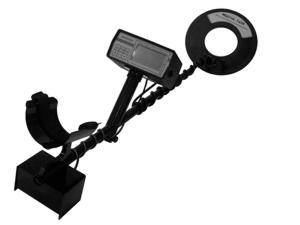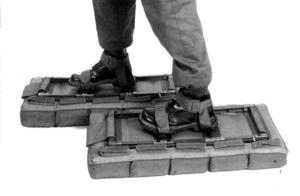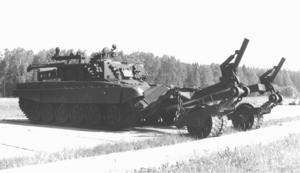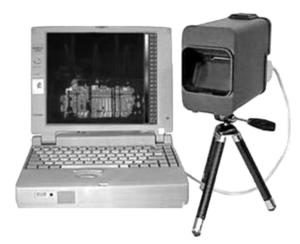Все про видеонаблюдение
Все про умный дом
Все о пожарной безопасности
Сейчас читают
 Как ускорить и смотреть ютуб без тормозов и замедленияЕсли Вы на этой странице, то Вам, скорее всего, […]
Как ускорить и смотреть ютуб без тормозов и замедленияЕсли Вы на этой странице, то Вам, скорее всего, […] 10 лучших прогрессивных языков программирования для разработки мобильных приложенийЗнаете ли вы, что мобильные приложения — это не только […]
10 лучших прогрессивных языков программирования для разработки мобильных приложенийЗнаете ли вы, что мобильные приложения — это не только […] 6 важных особенностей, которые следует учитывать при строительстве нового домаСтроительство нового дома – это уникальная возможность […]
6 важных особенностей, которые следует учитывать при строительстве нового домаСтроительство нового дома – это уникальная возможность […]
Гороскоп на Сегодня

#humanitarian demining
Some technical features of solving the problem of humanitarian demining.
PETRENKO Evgeny Sergeevich
Mankind, although not today and not suddenly, has faced another rather serious problem — the problem of humanitarian demining.
The essence of this problem is that in various regions of the world after the end of military conflicts there are up to 300 million mines and other explosive objects (EO) of various types, which still pose a mortal danger both to the civilian population and to specialists engaged in the search for and disposal of EO.
In connection with this, huge territories have been withdrawn from land use.
Permanent or temporary proximity to such an invisible, but very dangerous enemy, is accompanied not only by psychological, but also physical trauma, up to and including death.
The list of victims is constantly growing.
This disaster has not bypassed even prosperous Europe, which will still be eliminating the consequences of military conflicts in the territory of the former Yugoslavia and the USSR for a long time.
In addition to Europe, the problem of humanitarian demining is acute in the countries of Southeast Asia (Kampuchea, Laos, Vietnam), South Africa, the Middle East and many other regions of the world.
One of the most significant factors hindering the solution of the problem of humanitarian demining is the insufficiently high efficiency and safety of the applied models of equipment and technologies for searching and defusing mines and other explosive hazards.
Another aspect hindering a radical solution to the problem is the diversity of explosive hazards and the conditions for performing work in landscape and weather conditions.
Of all the diversity of explosive hazards, the most dangerous and, accordingly, guaranteeing the greatest difficulty in searching and defusing are:
- engineering anti-personnel, anti-tank, anti-vehicle and special mines, booby traps and improvised explosive devices, the fuses of which are set to the combat position with the long-range arming mechanism worked out;
- shells, grenades and shots for barrel artillery systems of calibers 20 … 203.2 mm, mortar mines of calibers 81 … 160 mm, which have passed the barrel bore;
- aircraft ammunition with removed safety stages;
- hand-held anti-personnel and anti-tank grenades without safety pins;
- fragments of rocket, artillery and aviation ammunition that may contain residues of rocket fuel in the combustion chambers of boosters, cruise engines and correction engines;
- all types of fuses and final loaded ammunition (with fuses screwed in) that have been subjected to impact loads as a result of explosions of ammunition depots, vehicle accidents, or ammunition falling (including in stowage boxes) from a height of more than 1.5…3 m onto a hard surface;
- fuses and fully loaded ammunition with traces of significant corrosion.
Explosive explosive devices can be located on the ground surface, buried up to 5…6 m (air bombs, large-caliber artillery ammunition, mine shaft charges and buried ammunition depots), as well as above the ground surface (in buildings and on trees).
There is a misconception that over time the danger from explosives decreases to zero, and there will come a time when explosives themselves will “dissolve” in the environment, causing only minor environmental damage.
This opinion is based on the hope for the gradual decomposition of the explosive substance (ES) with the formation of secondary non-explosive components, the destruction of the detonating devices and body parts of the explosives, as well as the hope for the explosives to fall into the ground to a great depth, where their explosion will not cause any harm.
It seems appropriate to conduct a reasoned analysis of such statements.
Combat explosives based on TNT (possible names — TNT, trinitrotoluene, TNT), hexogen (RDX) and octogen (HMX) have a fairly high chemical resistance over a long period of time, without decomposing or entering into various reactions under natural conditions with the formation of secondary products.
Temperature effects in a wide range of conditions (from -50 to +50 ° C) also do not cause significant changes in their explosive properties (brisance, explosiveness and sensitivity to initiating action).
For example, TNT as a result of long-term warehouse storage (several decades) turns from light yellow to brown and loses in explosiveness and brisance within no more than 5 … 7%.
Contact of TNT with alkalis at elevated temperatures and humidity can lead to a significant increase in sensitivity, which accordingly reduces the threshold of the pulse initiating detonation.
A peculiar exception is picric acid, which was widely used to fill ammunition before World War I and to a limited extent before World War II.
When the shell bodies corrode, picric acid salts are formed — picrates, which have a very high sensitivity to external influences.
Ammonium nitrate and gunpowder, as a result of long-term storage and contact with moisture, as a rule, significantly lose their sensitivity up to the complete loss of explosive properties.
Ammonia nitrate was used in ammunition mainly in a mixture with TNT (ammonites), which ensured the stabilization of the properties of explosives in a wide range of weather and climatic conditions.
Thus, the explosives included in the explosive explosives will retain their explosive properties for quite a long time, and in some cases there will be a significant increase in sensitivity to external influences with a corresponding increase in the danger emanating from the explosive explosives.
Corrosion and destruction of the bodies of the explosive explosives and detonating devices can also cause a significant increase in the danger emanating from such objects, both due to the possible occurrence of chemical reactions involving high explosives and initiating explosives, and due to the destruction of safety and actuator mechanisms and locking devices.
Over time, both the self-deepening of explosive ordnance into the ground and the reverse process — pushing these objects to the surface until they are completely freed from the camouflage layer of soil — can occur.
The deepening of explosive ordnance into the ground, on the one hand, helps to reduce the possibility of its detection, and on the other hand, it helps to localize the impact of damaging factors of a possible explosion (fragments, shock wave and detonation products) on the surrounding space.
The so-called camouflage explosion is especially “welcomed”, the characteristic feature of which is the absence of a conical funnel of ejection in the ground (an explosion without “opening” the funnel of ejection). And then, if we are not talking about large high-explosive charges capable of creating a powerful seismic wave, which in some cases can be considered as a kind of damaging factor of the explosion.
There are numerous known cases when initially (either intentionally or accidentally) engineering mines with pressure-action detonators were installed in the ground at a depth exceeding the standard, recommended installation depth.
As a result, the so-called pressure cone from the target in the ground did not create the force necessary for its activation on the surface of the detonator's pressure target sensor.
Over time, as animals, people and vehicles move along a mined area (a path or dirt road), the soil gradually compacts, forming a rut with a decrease in the thickness of the camouflage layer of soil.
And there comes a moment when the pressure on the target sensor of the detonator provides a force sufficient for its operation with all the ensuing consequences.
Cases of detonation on engineer mines installed during World War II still occur.
The arguments that in a section of land where no one has been blown up for a long time, and therefore demining work can be omitted, do not stand up to any criticism.
In this regard, the problem of humanitarian demining, unfortunately, is not solved automatically based on the principle of the statute of limitations, which has found wide and often successful application in other areas of human activity.
In addition to the above, there are a number of other features of humanitarian demining operations that have both a positive and negative impact on the effectiveness of the actions. Among the factors that contribute to the success of humanitarian demining operations, the following can be noted.
In the areas where the work is planned, military conflicts have already ended.
This means that, unlike during periods of active combat, there is no fire to kill from small arms and artillery against sappers conducting the search and disposal of explosive remnants of war.
Sappers can fully concentrate on their immediate work. It is no secret that during active combat operations, sappers have always been priority targets for the enemy, especially being in the vanguard of combat units.
Accordingly, the time frame for completing work is not as strict as in wartime.
The time that engineer mines with electronic, electromechanical and clock fuses remain in the combat position is limited by the time the electric charge is maintained by the power sources (for clock mechanical fuses — by the plant).
When the power source is depleted, the intensity of which increases especially in subzero temperatures, the self-destruction mechanism of the fuse and the entire munition as a whole is triggered, which is typical primarily for standard industrially produced fuses, switching to the transport (safety) position or simply losing the ability to respond to the appearance of a target.
The maximum time magnetic, seismic, optical, time fuses, as well as radio fuses, remain in combat position is from several hours to several months. A year or more after the installation of engineering mines with such fuses is complete, it can be said that there are no operational mines left.
However, this does not mean that such explosive devices have become completely safe — after all, the detonator with the initiating explosive remains inserted into the main explosive charge.
We can only talk about a significant reduction in the level of danger from a fairly significant group of explosive ordnance. At the same time, we must constantly remember that mechanical detonators of engineering mines will not lose their functional capabilities for many years to come.
Unlike the period of active combat operations, when the work of a sapper may be required day and night, in heat and cold, in rain and in the presence of snow cover, humanitarian demining operations can be carried out in fairly comfortable weather and climate conditions and in a planned manner.
This ensures, on the one hand, the maximum use of the capabilities of sappers as biological objects, and on the other hand, the use of special equipment that cannot be used in wartime (does not meet military standards for climate resistance, moisture resistance, vibration resistance, electromagnetic compatibility, the possibility of placement on specific models of military equipment, etc.).
It is known that one of the weakest points of special equipment are autonomous power sources — batteries, which can function in sub-zero temperatures for a rather limited time.
The same problem exists for devices equipped with liquid crystal indicators (LCD).
When planning specific work within the framework of humanitarian demining operations, naturally, the specific features of the functioning of special equipment can and should be taken into account for the maximum implementation of opportunities.
In reality, such obvious things are not always properly taken into account, and operations are carried out in winter, the most unfavorable period, with a corresponding significant reduction in the pace and safety of work.
Obviously, sometimes the opportunistic, financial and political considerations of foreign specialists overshadow all other arguments.
Against this background, even Russia, where the bulk of earthmoving work has always been carried out exclusively in winter on frozen ground due to higher tariff rates, does not seem like such a hopeless country of “evergreen tomatoes.”
When planning humanitarian demining operations, information obtained from all possible sources can and should be used in full: from interviews with local residents to space reconnaissance data on the location of suspected minefields and individual mines, types of mines and mining patterns, witnesses to events, etc.
In this area, there is practically no such thing as too much information.
Unfortunately, over time, the volume of such preliminary information will decrease for well-known reasons.
As time passes, the difficulties associated with the problem of finding explosives and explosive remnants of war will also increase.
Unfortunately, for open areas with their characteristic precipitation, soil erosion and significant circulation of air masses, the long presence of explosives and explosive ordnance in the soil, as a rule, leads to a significant decrease in the probability of their detection using mine detection dogs (MDS) and gas analysis devices [1].
Currently, the main tools of sappers searching for and demining explosive ordnance during humanitarian demining operations are induction mine detectors (metal detectors), dogs, a probe, a cord with a grappling hook, lightweight protective suits for sappers and… intuition.
Of the mine detectors, the best results are shown by selective induction ones, capable of providing a search for mines in conditions of the presence in the soil and on its surface of numerous foreign metal objects in the form of fragments, bullets, cartridges, foil, tin cans and other traces of the presence of Homo sapiens (photo 1).

Photo 1. Selective induction
mine detector of the MEDUZA series
Encouraging results are obtained by using special anti-mine footwear, which are air-filled containers made of elastic material with a large contact surface area with the ground (photo 2).
The point of using such footwear is that the pressure force from the sapper on the ground is distributed over an area significantly larger than that of ordinary footwear. The specific pressure from a person on the ground is reduced to a value at which the pressure fuses of anti-personnel high-explosive mines do not work.
Spectacular footage has been repeatedly shown on television, when during a demonstration of anti-mine footwear based on air-filled containers, a sapper walks on chicken eggs without damaging them.
It is important to keep in mind that in some cases such footwear may cause the opposite effect, for example, when searching for and defusing anti-personnel mines (APM) with tension target sensors, when the risk of snagging the wire and thread drives of the target sensor increases sharply.

Photo 2. Version of anti-mine footwear
In some cases, good results are achieved by using heavy armored vehicles to clear anti-personnel minefields and obstacles.
Minefields in the Kabul area were partially cleared in this way on the eve of the withdrawal of Soviet troops from Afghanistan using a special armored mine-clearing vehicle BMR (photo 3).
There is no single universal highly effective means of searching for VOPs, especially one that can work autonomously without human participation, and its appearance is not expected even in the distant future. Attempts to improve existing search technologies and develop fundamentally new directions are being carried out in many countries of the world, unfortunately, so far without obtaining more or less significant results.
Many experts consider a method based on the analysis of differences in the thermal fields of the main soil mass and the local zone in the area of the mine installation using equipment operating in the infrared (IR) spectrum of thermal imagers and thermographs as one of the most promising methods of searching for mines.
Experts recognize the fact that the IR method shows good results when there is a significant difference in IR radiation from the soil layer located directly above the mine and from the rest of the soil mass.
Two variants of the method implementation are considered: passive (using solar energy) and active (using an artificial heat source). It is obvious that the effectiveness of searching for underground objects, which include mines, largely depends on the operator's qualifications and the actual conditions of the situation.
The conditions of the situation are determined by both the type of mines and the physical and mechanical parameters of the soil at a given moment in time (at specific temperature and humidity parameters), taking into account the consequences of the biological activity of plants, animals and human activity.
Laboratory and field experimental studies using IR technology have shown that even minor local changes in soil moisture and density, not to mention individual foreign objects and inclusions, can lead to false “alarms”.

Photo 3. Armored mine-clearing vehicle
of the BMR series
In principle, there are serious doubts about the possibility of using passive thermography to search for mines, especially antipersonnel mines in damp, heavy soils with dense vegetation. The active method has somewhat greater potential for searching for mines.
A characteristic feature of this method is the significant time it takes to heat up a section of terrain (up to 15 min.) and then cool it down (up to 50 min.) in order to create the necessary temperature gradient of the thermal fields above the search object (mine) and other sections of the terrain.
And if for a homogeneous (uniform) environment the use of the method does not raise any doubts, then when working in a heterogeneous (inhomogeneous) environment, the capabilities of the method will obviously be significantly limited.
It seems appropriate to consider the issue of using IR methods primarily for remote search of fragmentation antipersonnel mines of circular or directional destruction with a tension target sensor installed on the ground surface and having a barely noticeable wire or thread tripwire up to several tens of meters long.
The task of remote search for such mines is extremely relevant, since sappers with mine detectors (even very good ones) in special protective gear and MRS dogs are practically powerless against such mines.
To date, the greatest success in this area has been achieved in Russia with the help of the portable computer thermograph IRTIS-2000” (photo 4), designed for visualization of thermal fields and remote determination of the temperature of various objects.
The device is especially effective in searching for and defusing anti-personnel fragmentation and high-explosive mines installed on the ground surface, when searching for object charges in buildings and structures.
The temperature difference that the device can detect is only 0.05 ° C; it is possible to store a large number of thermal images of various objects and subsequently process them on a computer (for example, automatic comparison).

Photo 4. Portable computer
thermograph “IRTIS-2000”
Some specialists are pinning their hopes on the possibility of using ultrasound to search for mines in the ground. The introduction of this technology, which is already widely used for non-destructive testing in industry and medicine, into mine-searching practice is currently hampered by a number of difficulties. One of the main difficulties is due to the fact that the initial parameters of the ultrasonic signal, propagating in the ground, change depending on its composition and microstructure. And this cannot be predicted in advance.
In addition, search objects are not always distinguishable against the background of local changes in soil properties.
Additional difficulties are imposed by the diversity of mines: their sizes, shapes, right down to micro-irregularities, possible orientations in the soil and the spread of parameters at the boundary of contact of a specific mine with the soil.
Unfortunately, soil, compared to homogeneous material, turned out to be a very unsuitable environment for working with ultrasound.
Of particular interest are studies in the field of acoustic signals of sound frequency (working frequency range from 5.9 Hz to 6 kHz).
The studies conducted have shown a significant dependence of the results of searching for mines on their shape, material and surface microroughness.
In addition, the identification of objects made of various hard materials (stone, metal or plastic) is problematic, while the differences in the detected signals between objects made of soft and hard materials are obvious.
Attempts to use surface seismic waves with a length of 1.0 to 2.5 m to search for mines in the ground are ongoing.
This method is based on recording an increase in the phase velocity of wave dispersion (scattering) in the area of the location of certain inhomogeneities in the ground compared to the background homogeneous soil.
The method has already found wide application in examining the soil under the road surface without damaging it for the presence of voids, tunnels, pipelines and other relatively large objects.
A characteristic feature of the method is the need to locate the area under study between the source of seismic waves and the receiver, which can cause certain difficulties when working in a minefield.
In addition, special studies are required to assess the possibility of using the method to search for such small-sized objects as high-explosive antipersonnel mines.
Apparently, the implementation of the results of work and research in the field of ultrasound, acoustic signals of sound frequency and seismic waves in the practice of mine clearance is possible, unfortunately, in the distant future.
In general, humanity will have to deal with the solution of technical, financial and organizational problems associated with humanitarian mine clearance for quite a long time, given the addition of new minefields to the old ones.
The main thing is that almost all countries of the world have recognized the existence of such a global problem and, to one degree or another, have begun to search for practical solutions. I would like to hope that Russia will not remain on the sidelines of the process, especially since it has such a significant technical reserve in this area.
Literature
1. Petrenko E.S. Some features of searching for explosives and explosive objects using dogs, gas analysis devices and chemical express tests.
Special equipment, 2002, No. 4.






Добавить комментарий